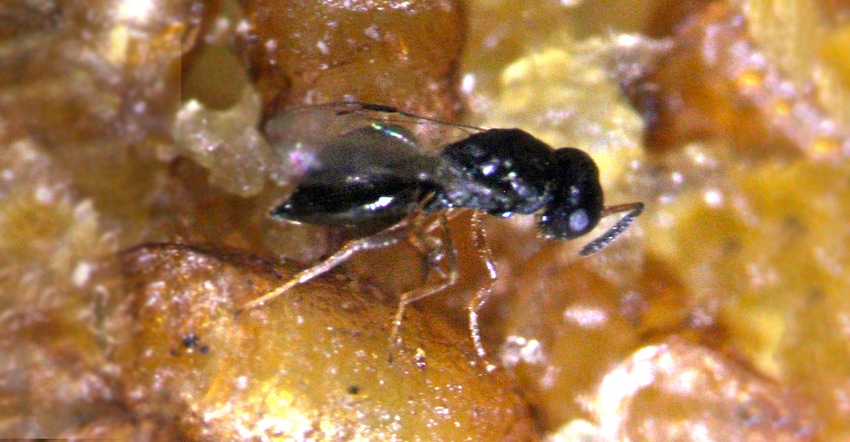January 16, 2020

Fruit flies, specifically the spotted-wing drosophila, are costing Oregon growers a billion dollars a year in destruction. Oregon State University researchers have identified a parasitic wasp that might help with the problem, and reduce pesticide use at the same time.
In addition to reducing pesticide use, biological controls can also reduce nontarget insect impacts, too.
Vaughn Walton, professor and Extension entomologist in OSU’s College of Agricultural Sciences, notes that the spotted-wing drosophila is difficult to control. “It’s got a very, very high reproduction rate — many generations a year. Because of that, when using pesticides, they have to be applied constantly — sometimes two to three times a week.”
He observes that the multispray approach is not economically or environmentally viable for the long term; layering in a biological control can help. The pest — also known as SWD — destroys 10% of fruit value. Management in the blueberry industry alone costs $100 million annually.
Other crops impacted by the fly include strawberries, raspberries, blackberries, cherries — and if conditions are right, grapes. That last crop is of growing concern for Oregon’s wine industry. In Europe and the Eastern U.S., SWD is already a serious pest for winegrapes.
The wasp, Pachycrepoideus vindemmiae, is being studied by Walton and his colleagues and could help stop SWD. “Based on the survival and host-killing capacity of the wasp, we have concluded it has tremendous biocontrol potential against SWD,” Walton says.
The researcher’s findings were published in a recent edition of the journal PLOS One.
Mode of action
Usually, a parasitic wasp will burrow into its host, lay eggs and kill the host. However, during that action, the host can develop antibodies to fight off the parasitic attack. OSU researchers found that P. vindemmiae works differently, laying its eggs on the outside of the larvae skin, avoiding antibodies.
Tackling SWD will require more than a parasitic wasp. It will include adding cultural practices including good sanitation, correct pruning, drip irrigation and weed cloth as part of a holistic pest management plan. Drip irrigation, for example, can lower the longevity and reproductive ability of SWD. Weed cloth provides a barrier to keep the flies that drop from the fruit from burrowing into the ground and laying eggs.
A native of Southeast Asia, spotted-wing drosophila arrived in Oregon in 2009 and has now spread throughout the world. The P. vindemmiae wasp is one of only two parasitoid species that have been naturally found to successfully attack and kill spotted-wing drosophila in the field, according to Walton.
Adult drosophila flies resemble the small fruit or vinegar flies that buzz around the kitchen or around rotting fallen fruit outdoors. Infested fruit shows small scars or speckles made when the adult female lays its eggs. The eggs soon hatch, and the maggots begin feeding inside the fruit, causing damage that results in severe crop losses.
The parasitic wasp has gone through a range of tests, and Walton is awaiting a permit to raise and release the wasp in large numbers.
Source: Oregon State University, which is solely responsible for the information provided and is wholly owned by the source. Informa Business Media and all its subsidiaries are not responsible for any of the content contained in this information asset.
You May Also Like




